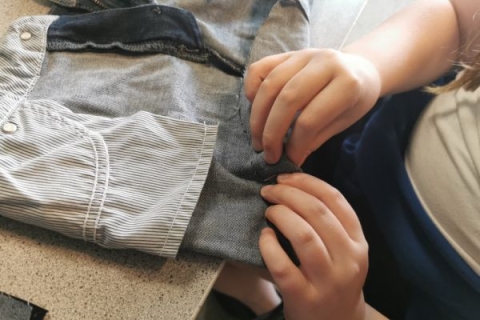

PhD student Helen O'Sullivan writes on circular and sustainable fashion in recognition of World Circular Textiles Day
6 min read
About me:
I am currently undertaking my second year of a part-time (6 year) creative practice PhD through the school of Art, Design and Performance. This follows a long personal and professional passion for sustainability within the fashion industry, including establishing SustFashWales. I have worked within sustainable fashion for over 15 years and have taught eco-friendly creative skills within my local community and at education establishments throughout south Wales for over 11 years. I became a secondary school teacher of fashion 5 years ago in Swansea and embed sustainability within my pedagogical practices and the wider curriculum. However, in recent years I have realised that no matter what I teach or what the pupils understand, the majority of them still shop at fast-fashion brands on the weekends. This is known as the attitude behaviour gap and has led me to question whether teenagers are already too old to unlearn irresponsible consumption habits. My PhD is titled Crafting the Consumer and aims to address this gap through creative practices, working with primary aged children and their families, with the goal of creating responsible consumers of fashion of the future.
Why is it important?:
The circular economy (with a focus on circular fashion and textiles) is crucial to address our current throwaway, linear model of consumption. The wasteful paradigm of fast-fashion has resulted in environmentally and socially catastrophic impacts all along the supply chain. Only recently has the cost of fast-fashion started to be understood, yet it remains an area largely under researched. Another key issue is the inconsistencies found in the research undertaken, which can lead to consumer confusion and ultimately, apathy. This is where education can play a central role in addressing these gaps in knowledge and provide consistent and coherent information.
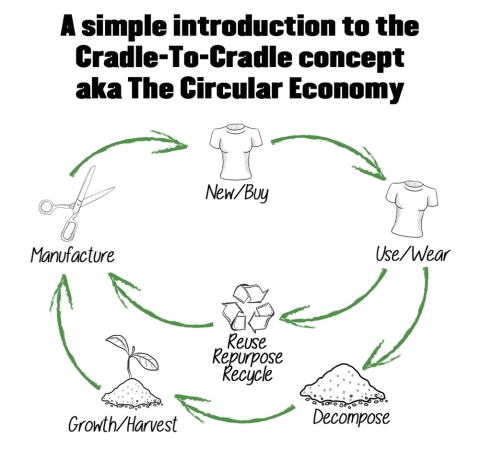
A simple introduction to The Circular Economy
Education:
When viewing the fashion industry from a circular economy perspective nothing is considered waste, in fact waste is considered a resource. I have redesigned my curriculum with this in mind and sustainability is embedded within every lesson and activity. My Key Stage 3 projects use upcycled fabrics such as old jeans and scraps to create bags and character toys. When I teach children how to thread a needle or hand sew, I make direct links to real life skills such as the maintenance of their clothes. When I teach them how to sew a button as an eye on their toy, I explicitly make the link between repairing a button later in life. Everything I teach is focussed on sustainability. I have created a range of resources to explain complex subjects in simple terms that even children can understand, such as this simple diagram of the cradle-to-cradle concept aka circular fashion.
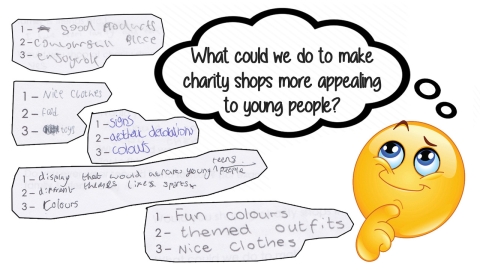
Pupils made suggestions of what would make charity shops more appealing to young people
Feedback from pupils:
The most exciting part of teaching young people is their common sense, no nonsense approach to life. They don’t understand why grown ups do what they do, and as adults we have the tendency to overcomplicate things or look at life through an economic lens. Children are not afraid to question the motives of grown ups, such as why we cover our bodies in plastics and why those microplastics from clothing have been ingested by creatures such as the deep sea brittle star for the last 50 years. We, as adults, know it’s because polyester is cheap to produce. But children understand other values, values such as clean water, less pollution and access to resources for their and future generations. We need to listen to children more.
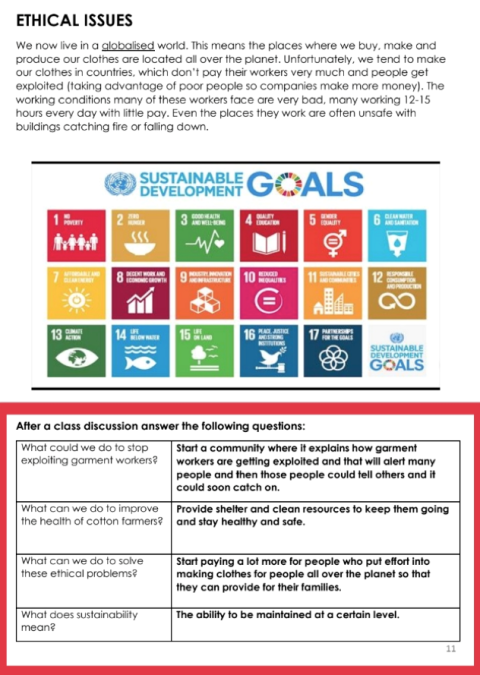
In a feedback form, a year 7 pupil suggested starting what we know as Fashion Revolution
Education:
When viewing the fashion industry from a circular economy perspective nothing is considered waste, in fact waste is considered a resource. I have redesigned my curriculum with this in mind and sustainability is embedded within every lesson and activity. My Key Stage 3 projects use upcycled fabrics such as old jeans and scraps to create bags and character toys. When I teach children how to thread a needle or hand sew, I make direct links to real life skills such as the maintenance of their clothes. When I teach them how to sew a button as an eye on their toy, I explicitly make the link between repairing a button later in life. Everything I teach is focussed on sustainability. I have created a range of resources to explain complex subjects in simple terms that even children can understand, such as this simple diagram of the cradle-to-cradle concept aka circular fashion.
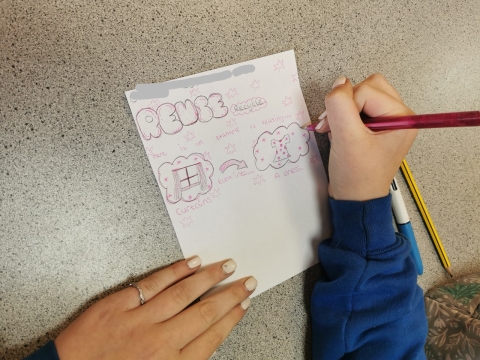
Work from a pupil, promoting the idea of reusing clothes
Links to the PhD:
My PhD is multidisciplinary in nature, as it focuses on sustainable fashion, consumption, marketing and of course, education. I have an excellent supervisory team all of whom champion sustainability and/or the empowering potential of child-centred creative and informal education. I plan to work with groups of young children and their families over a number of years within a creative environment to address the big questions through creative practice. The PhD aims to foster a generation of responsible and critical consumers of fashion, who realise their connection to others and play active roles as global citizens.
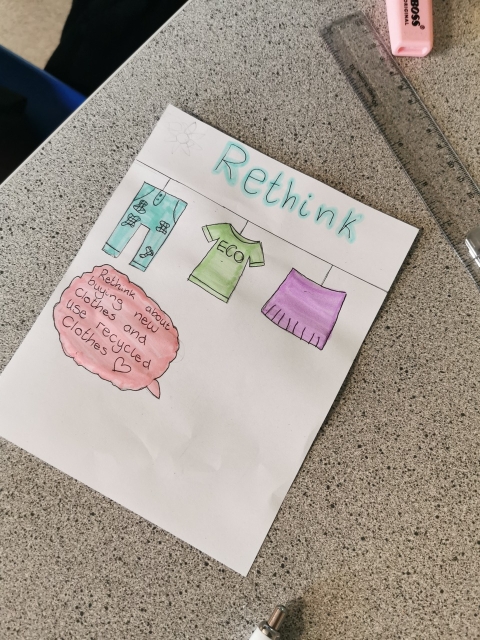
Work from a pupil, promoting the idea of rethinking clothes instead of throwing them away
Further research:
Over the last year I have also acted as an advisor to the CharioCity report led by Professor Becky Earley, as part of World Circular Textiles Day (WCTD). The report has been compiled from a series of workshops to investigate how the charity shop sector can recover from the pandemic, and how education and young people are central to this. My contribution included providing exemplar resources for various projects and activities all tried and tested within my own classroom, including those added to the Knowledge Hub and the SustFashWales website. The report will be released on WCTD 8 October and aims to be an evidence base for future education. You can find out more by visiting the WCTD website or WCTD Knowledge Hub.
